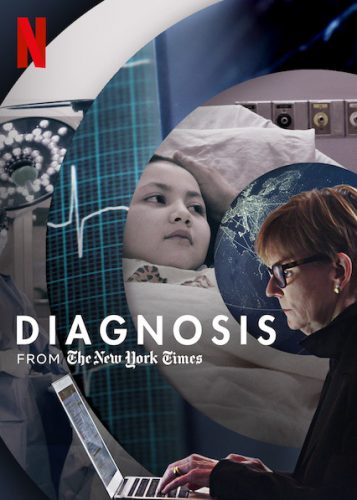“A Man Discovers He Has a Disease Most People Thought No Longer Existed.”
“She Had a Long and Strange Rash on Her Arm. What Was It?”
It might seem like clickbait, but “Diagnosis” is surprisingly intimate and infinitely relevant. This New York Times Magazine column turned Netflix documentary by Yale Associate Professor of Medicine Lisa Sanders has been telling the stories of mysterious medical cases since 2002. Behind every catchy title is a patient’s narrative: an account of a seemingly undiagnosable condition followed by a journey through its eventual resolution. In 2018, Sanders wrote about ten patients with unsolved symptoms, then crowdsourced diagnosis guesses and other information from her readers via written responses and video recordings. Eight of the stories were adapted into a seven-part Netflix docuseries, which premiered in August 2019.
Each of the episodes frames the story of an undiagnosed patient with commentary from Sanders, other medical professionals, family members, and responders from the advice form. The cases range from a seven-year-old girl faced with a high-risk brain procedure to a man who experiences strange déjà vu moments accompanied by random heart attacks. Once the patient’s background and symptoms are introduced, the rest of the episode chronicles appointments with doctors and conversations with Sanders until a diagnosis or treatment plan is reached.
What makes this show revolutionary is the teamwork that occurs between the crowdsourced responders, the patient’s community members, and Sanders herself in finding the right diagnosis. “One of the tools that doctors use are the other doctors in the room, and whether you’re going to get a diagnosis or not depends on who’s in that room and who might see something that they recognize and understand, and then identify it,” Sanders says in the first episode. “What we’re doing is just making the room that much bigger.”
In one episode, the debunking of a few medical professionals’ diagnosis guesses leads Sanders to consider opinions from a nonmedical crowd, including lawyers, teachers, and students, who propose that anxiety could have contributed to the patient’s condition. In another episode, a patient catches a flight to Italy to meet with a medical student uniquely familiar with the patient’s particular disease—and whose hospital staff eventually determines the right diagnosis.
Some of the most intimate moments from the show come from virtual interactions between the patients and internet responders who were impacted by the same disease. “For the longest time, no one even cared. And now, I have the biggest support system and the biggest medical team,” said Angel, the patient featured in the first episode, after a video call with a responder. “To me, she’s a part of my medical team now because she could have just found the answer.”
The best documentaries are those that tell compelling stories, and Diagnosis does that and more: it reveals the challenge of piecing together a diagnosis from a patient’s perspective, demonstrating the need for altruism in a process so scientifically yet emotionally complex.
“Sometimes, it takes a while before you get the right answer,” Sanders said. “Sometimes, it takes a while to find out what happens. In the liberal arts, we have a word for that: suspense. You don’t know what’s going to happen until the end, and that’s what keeps you going forward.”

